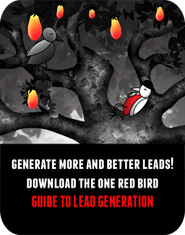When inbound marketing is working as it should, the process becomes what’s commonly known as a “sales funnel.”
At the top of the funnel, prospects are far from being ready to buy. As they move down the funnel—encouraged along the way by your content—they get closer and closer to sales-readiness until they finally reach the “spout” and are funneled to sales.
Why Is This Important?
The funnel image is useful in thinking about your inbound marketing because it’s a simple way to visualize how all your efforts are aimed toward the same ultimate goal—increasing the quantity and quality of sales-ready leads.
You can begin to ask questions about your inbound marketing strategy, such as:
- Are we doing our best to bring potential customers into the funnel? (Demand Generation)
- Are we working to pull leads toward the bottom of the funnel? (Lead Nurturing)
- Do we understand how well the funnel is working? (Lead Measurement)
- Is something clogging up the funnel? (Lead Management)
- When exactly do prospects reach the funnel’s spout? (Sales and Marketing Alignment)
If you have some other way you like to think about your inbound marketing, that’s great, as long as it works to keep your marketing focused on generating, nurturing, measuring, and managing leads up to a predetermined point where they’re passed off to sales.
Personally, I think the sales funnel concept works because of its simplicity, because it really reinforces the idea that you’re narrowing down leads from general prospects to people who are very likely to buy, and because it makes it clear that the process is all about flow.
But the image you have in your head isn’t important—the system and strategy it represents are what’s important.
What Can You Do?
Most people generally associate inbound marketing—using content to engage with customers—with filling the top of the funnel. This makes sense; the more that goes into the funnel, the more will be flowing through to sales.
So you’ll certainly need to focus on this aspect of your marketing strategy by developing quality content and reaching potential customers with it. You can do this in many ways—blogs, email newsletters, white papers, webinars, social media, and so on—all of which can be delivered using marketing automation.
But inbound marketing doesn’t stop there. You’ll also need to use content to keep leads engaged as they work their way down the funnel. At this stage, they’re not quite ready for sales, and to send them to sales as this point is counterproductive, resulting in inefficient use of sales rep’s time. But you’ve got to keep the leads moving toward sales. That’s how marketing automation continues to play a critical role, ensuring that content is delivered to the right people at just the right time.
This doesn’t mean there’s no human touch. On the contrary, marketing will need to become more personally involved in nurturing the leads the farther they get to the bottom of the funnel.
Where is that? That’s up to you, but it should be based on concrete, predetermined criteria. You should pinpoint just the right set of factors that make a lead sales-qualified for your organization, and that pinpointing should be made in light of what’s been shown to work.
Wherever you decided the bottom of the funnel is, the key is coordination between sales and marketing so that they’re always aligned in how they treat leads. You don’t want your leads getting stopped up in your funnel because sales and marketing aren’t on the same page.
You’ll also need a process for sales to return leads to the funnel if they don’t become customers after they get to sales. And you’ll need to keep evaluating your criteria for considering a lead sales-qualified, making adjustments based on analytics from your marketing automation.
The Bottom Line
Consistently thinking of your marketing in terms of a sales funnel helps keep the focus on increasing leads at the top of the funnel, moving them down the funnel, and sending them to sales just as they’re primed to buy.



